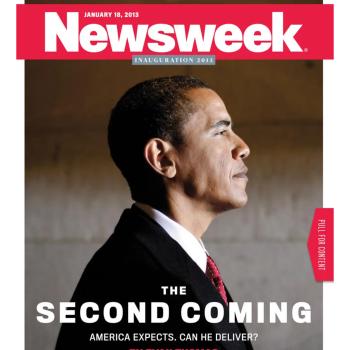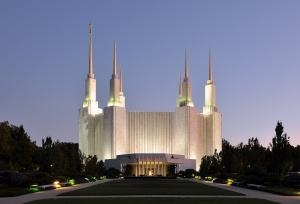A funny thing has happened to time during my adult lifetime.
When I began college, it was customary to use the abbreviations “BC” (Before Christ) and “AD” (Anno Domini, or in the year of our Lord) in the rather tricky task of keeping track of years. Thus, the Babylonians destroyed the first Jewish temple in the year 586 BC and the Romans destroyed the second temple in AD 70.
By the time I started graduate school, those old ways of marking years (the system dates back to the sixth century) were fading away. I now encountered “BCE” (before the Common Era) and “CE” (Common Era). I didn’t see why anyone should have changed the old abbreviations and felt it my evangelical duty to defend them. “They date time after this guy,” I remember youth group leaders saying from time to time, attempting to persuade those of us who came of age in the late 1980s and early 1990s of his permanent significance. I am also the sort who likes to keep the old lyrics in venerable hymns, thank you very much. I don’t think I ever made a formal defense of BC/AD, but I kept employing them whenever possible, which since I was studying U.S. History was not terribly often. I still like to tell my students that the only reference to God in the U.S. Constitution comes with “in the Year of our Lord one thousand seven hundred and Eighty seven.”
I was not alone in my defensiveness. The Southern Baptist Convention in AD 2000 contended for the continued use of the Gregorian calendar. They denounced the sinister forces behind the revised abbreviations, attributing the “practice … [to] the secularization, anti-supernaturalism, religious pluralism, and political correctness pervasive in our society.” The Southern Baptists argued that the “traditional method of dating is a reminder of the preeminence of Christ and His gospel in world history” and a testimony “to all that history is ultimately His Story.” Take your common era and shove it!
By the time I had my first more-or-less secure job (2006), the transition from AD to CE was pretty much complete in academia. These days, it would difficult to persuade most non-Christian publishers to use the old abbreviations.
Now that I’m housed in a department of religious studies, I teach courses that cause me to stumble over pre- and post-Christian years. Being somewhat less curmudgeonly than in my young adulthood (hymns excepted), I sallied into the new epoch of time and began using “BCE” and “CE.” After all, those terms (or the equivalent “Vulgar Era”) have been around for centuries, and given that most non-Christian seem to prefer them, I figured I should try to be accommodating.
My first problem came when I had to teach material on Islam. I encountered things such as the following in M.A.S. Abdel Haleem’s introduction to his translation of the Qur’an: “Soon after his return to Medina in the year 632 CE (AH 10), the Prophet received the last revelation of the Qur’an and, shortly thereafter, died.” AH stands for “Anno Hegirae,” after Muhammad and his followers’ Hijra or flight from Mecca to what became Medina.
Now, as far as I know Muslims are quite willing to use the BCE and CE designations, especially in international contexts. Nevertheless, having been told that CE stood for “Common Era,” learning about AH was a great disappointment. It meant that 1.6 billion or so individuals kept track of years in a decidedly uncommon way. Of course, there are all sorts of other calendars around the world. India uses a Hindu calendar alongside the Gregorian. The scales had fallen from my eyes, however. It turned out that “common era” was just a euphemism for dating time after Jesus Christ.
My classroom performance when expressing dates has deteriorated over the past several years. I sometimes feel compelled to say “the allegedly common era,” producing looks of confusion on the part of students. Especially in my course on Abrahamic faiths, I could in theory use the Jewish calendar at the outset, then switch to BC/AD, and then end with the Islamic calendar. It is, however, not a course in mathematics. Now, I sometimes use the terms “before the birth of Jesus” and “after the birth of Jesus.” Clunkier, but specific.
Since there is no truly common calendar, it has occurred to me that in this land of the free, it might be best if we all adopt our own preferred method. After all, we don’t use the metric system. Why should we use a common calendar? Patriotic conservatives could refer to our current year as 239 USA, whereas liberal internationalists could opt for UN 70. Mainline Presbyterians, admittedly unlikely to choose something triumphal, could use refer to PCUSA 22. Given our hemorrhaging membership, we are unlikely to make it to PCUSA 122. Americans who already enjoying putting together their own personal religion might like to have their own calendar system as well. This is year JT 42. Admittedly, it would be cumbersome to describe the Second Temple’s destruction as occurring in the year BJT1903 or so.
Fortunately, the term “Christian era” also dates back centuries. It’s the perfect solution. First of all, it correctly denotes our calendar system’s religious origins. But it does so in a way that does not require non-Christian to refer to the lordship of someone who is not their lord. It also fits with BCE and CE.
So that’s my preferred option. Of course, I’m just happy if my students can place Moses, Jesus, and Muhammad in the correct chronological order.












